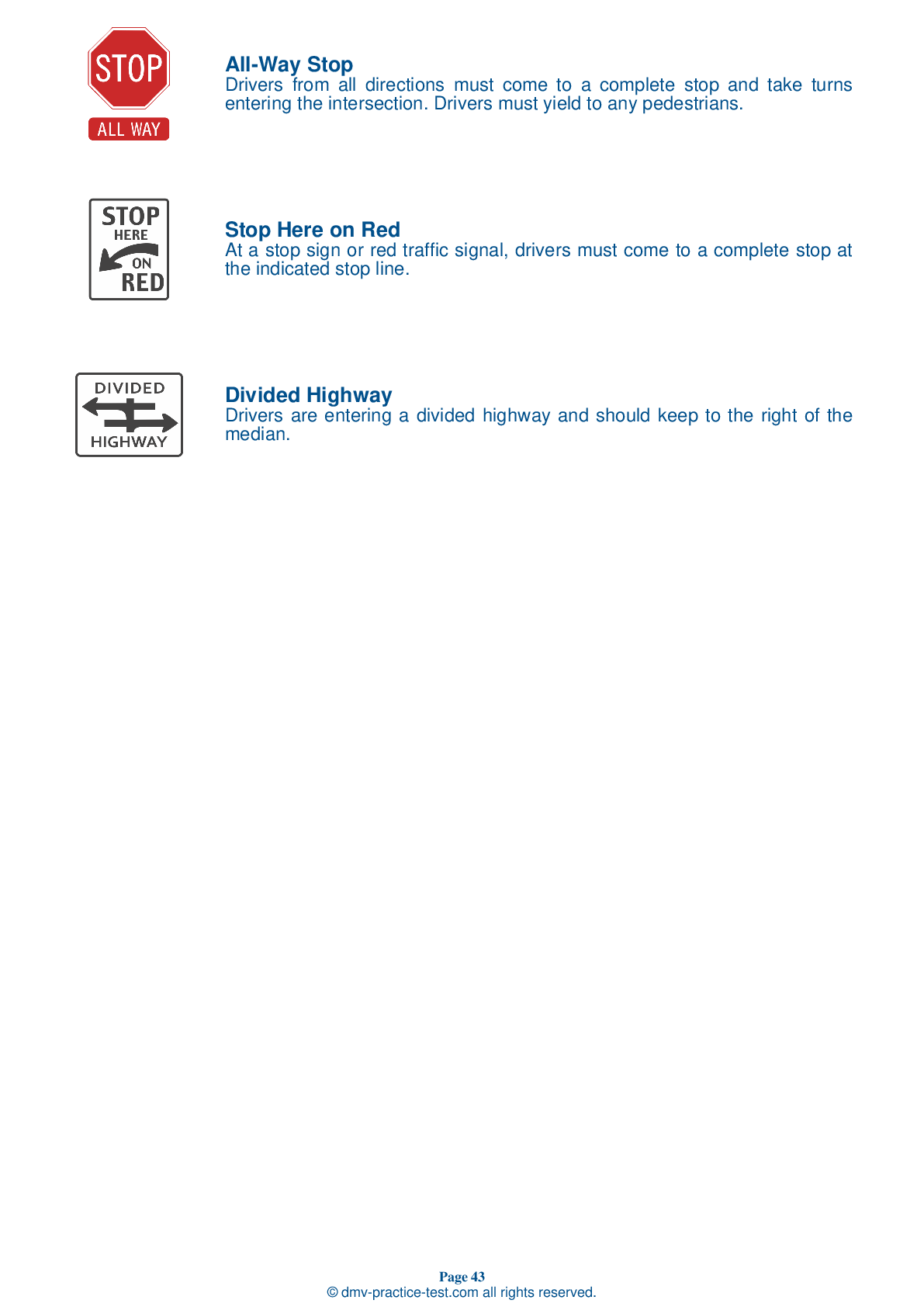FREE Connecticut DMV Practice Test #9 Page 3 of 3
This set of Connecticut DMV practise tests was just updated for January 2025. It includes questions based on the Connecticut Driver Handbook's most essential traffic signs and regulations for 2025. Use actual questions that are very similar (often identical!) to the DMV driving permit test and driver's licence exam to study for the DMV driving permit test and driver's licence exam.
Each practise test question has a hint and explanation to assist you in remembering the concepts. The written component of the official DMV test will include questions about road rules, traffic signs, and driving statutes, as well as information from the Driver Handbook.
To achieve the required passing grade, you must correctly answer 20 of the 25 questions. Take our DMV practise exam to help you prepare for your Connecticut instruction permit or driver's licence.
The DMV exam is available in several languages.
Using any form of testing help will result in an automatic fail, and the DMV may take further action against your driver's licence, so avoid it.
17 . This sign is used to warn drivers that:

Warning signs are usually yellow with black markings. They alert you to conditions that are immediately ahead. This sign warns drivers that the number of lanes is reduced ahead and that traffic should merge left.
18 . In inclement weather, you should:
When driving during unfavorable weather conditions, avoid slamming on the brakes and making sharp, quick turns. These behaviors will make controlling your vehicle in inclement weather even more difficult.
19 . What does a traffic signal with a yellow left arrow indicate?
When a protected turn arrow changes from green to yellow, drivers must prepare to yield to oncoming traffic. A yellow arrow indicates that the protected left turn is ending.
20 . Increase your following distance when driving behind a large vehicle:
Drivers of trucks, buses, vans, and any vehicles pulling campers or trailers may not be able to see you if you are driving directly behind them. Increase your following distance when driving behind one of these vehicles. Additionally, large vehicles can block your view of the road, so increase your following distance to look around the sides of the vehicle and see the road ahead.
21 . There's an approaching emergency vehicle using its flashing lights and siren. You should:
You must yield the right-of-way to police vehicles, fire engines, ambulances, or other emergency vehicles using sirens, air horns, or red or blue flashing lights. When you see or hear an emergency vehicle approaching from any direction, you must pull over to the right edge of the road, or as near to the right edge as possible, and stop your vehicle.
22 . When a pedestrian guided by a dog or carrying a white cane is crossing the street:
Blind or partially blind pedestrians may carry a white cane or use the assistance of a guide dog. You must always yield the right-of-way to a pedestrian who is using a guide dog or carrying a white cane.
23 . On a freeway, you should look farther ahead than you would on a city street:
On the freeway, be ready for changes in traffic conditions. Watch for signals from other drivers. Expect merging vehicles at on-ramps and interchanges and be prepared for rapid changes in road conditions and traffic flow.
24 . While in a motor vehicle on a highway, it is:
It is illegal to operate a motor vehicle while under the influence of alcohol. Neither drivers nor passengers may possess an open container of alcohol in a motor vehicle while it is in operation.
25 . This sign means:

A triangular yellow sign with black lettering indicates a no passing zone. It will appear on the left side of a two-way, two-lane roadway at the beginning of an area where prohibitive pavement markings are also used.
See the exact questions that will be on the 2025 Connecticut DMV exam.
99.2% of people who use the cheat sheet pass the FIRST TIME
LT gives us an insight on how the cheat sheet provided her with all the study questions she needed before taking her test.
Joe initially studied with the handbook and failed his test, he eventually found us online, studied and pass his test the first time around.



